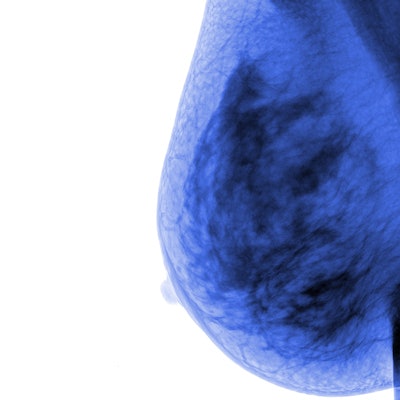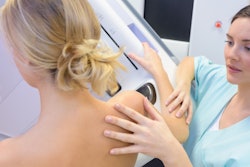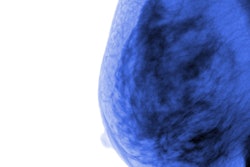
Radiologists can "get the gist" of breast cancer in mammograms up to three years before clinical signs of it are visible, according to a new study published online June 5 in BJR. The results support the fact that radiologists and their expertise are still crucial when it comes to cancer detection.
"Imaging specialists can detect signals of abnormality in mammograms acquired years before lesions become visible. Detection may depend on expertise acquired by reading large numbers of cases," wrote a team led by Karla Evans, PhD, of the University of York in the U.K.
Screening mammography remains the gold standard for identifying breast cancer, but it has its drawbacks, including limited performance in dense breast tissue and potentially high recall rates. But finding disease as early as possible results in the best patient outcomes -- which is why when expert readers can "get the gist" of cancer before it appears clinically, that's good news for patients, according to the study as well as previous research published in 2016.
"The human visual system quickly extracts the global structure and statistical regularities from everyday scenes, allowing us to 'get the gist' of our environment before selective attention captures the details," Evans' team noted. "Anecdotal reports of experts, supported by eye-tracking and psychophysical measures, indicate that similar gist processing operations occur in the assessment of a mammogram, and, indeed, in other medical image perception tasks."
The researchers sought to assess whether radiologists could see early signs of breast cancer before they presented. Their study included 59 readers divided into three groups (U.K. radiologists, U.S. radiologists, and U.K radiographers) who viewed up to 200 bilateral mammograms for 500 msec each. Members of the three reader groups interpreted between 380 and 6,200 mammograms in the past year.
Half of the images were prior exams acquired three years before the onset of visible cancer, and half were benign. The readers rated the likelihood of abnormality on a zero to 100 scale and categorized breast density. The researchers measured reader performance using area under the curve (AUC) analysis.
The team found that in all three groups, readers could identify abnormal images on the mammograms taken three years prior to visible signs of breast cancer (p < 0.001). These results were not influenced by breast density, the team noted.
| Performance by reader group for finding the gist of cancer on mammograms | |
| Reader group | AUC |
| U.S. radiologists | 0.54 |
| U.K. radiologists | 0.54 |
| U.K. radiographers | 0.53 |
The study results show that earlier detection of breast cancer is possible, which can translate into better outcomes for women with the disease, according to the researchers.
"Global gist signal can serve as an imaging risk factor with the potential to identify patients with elevated risk for developing cancer, resulting in improved early cancer diagnosis rates and improved prognosis for females with breast cancer," Evans and colleagues concluded.




















